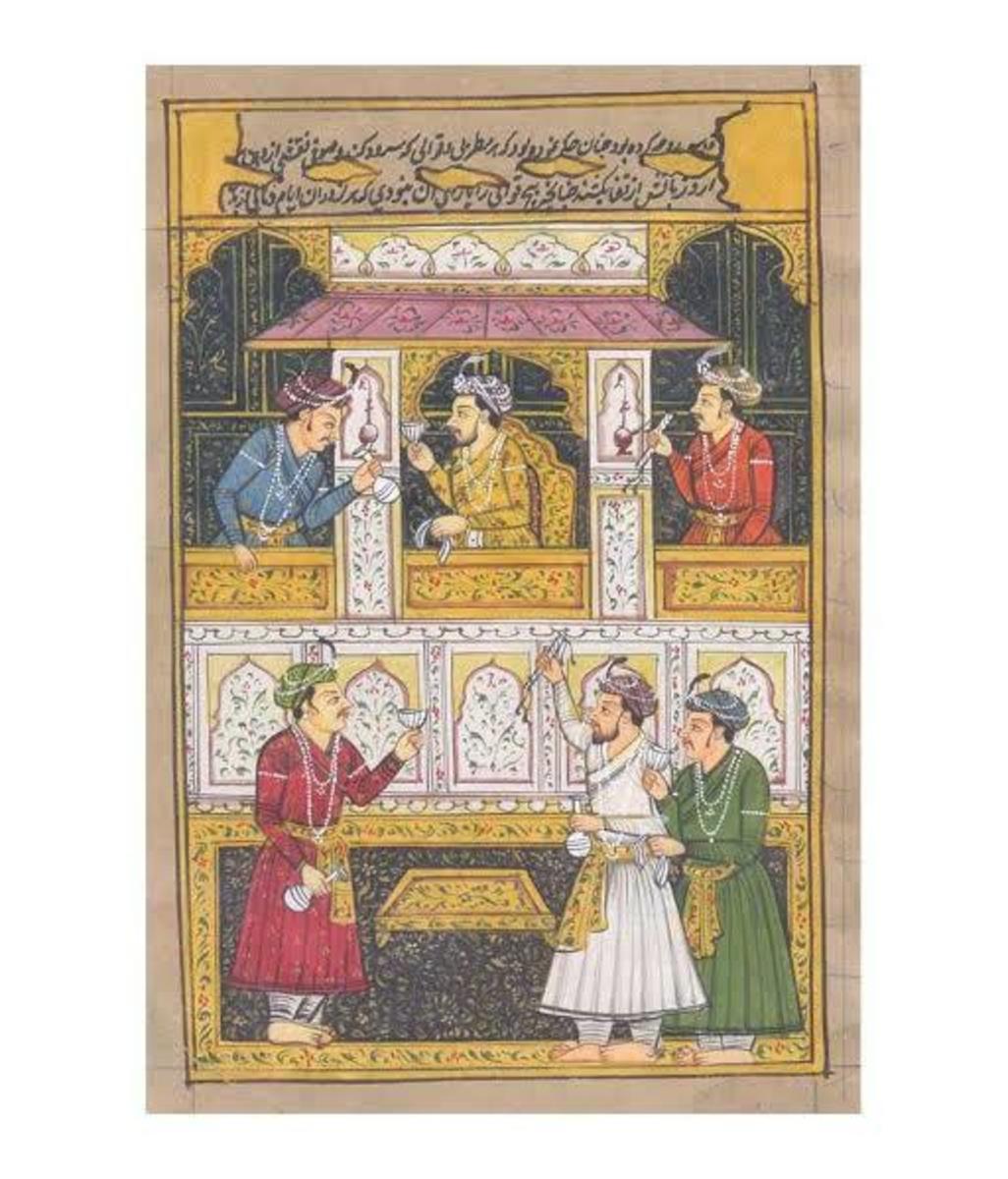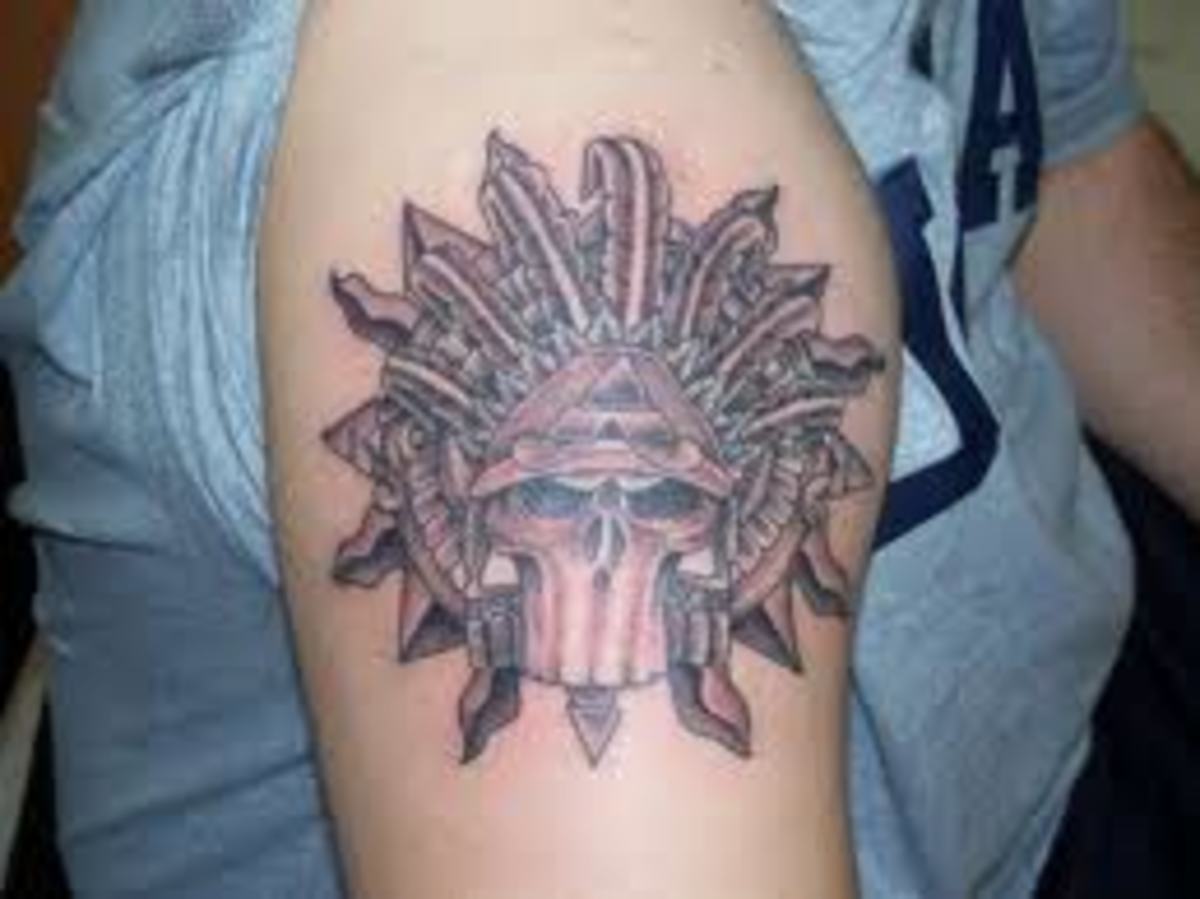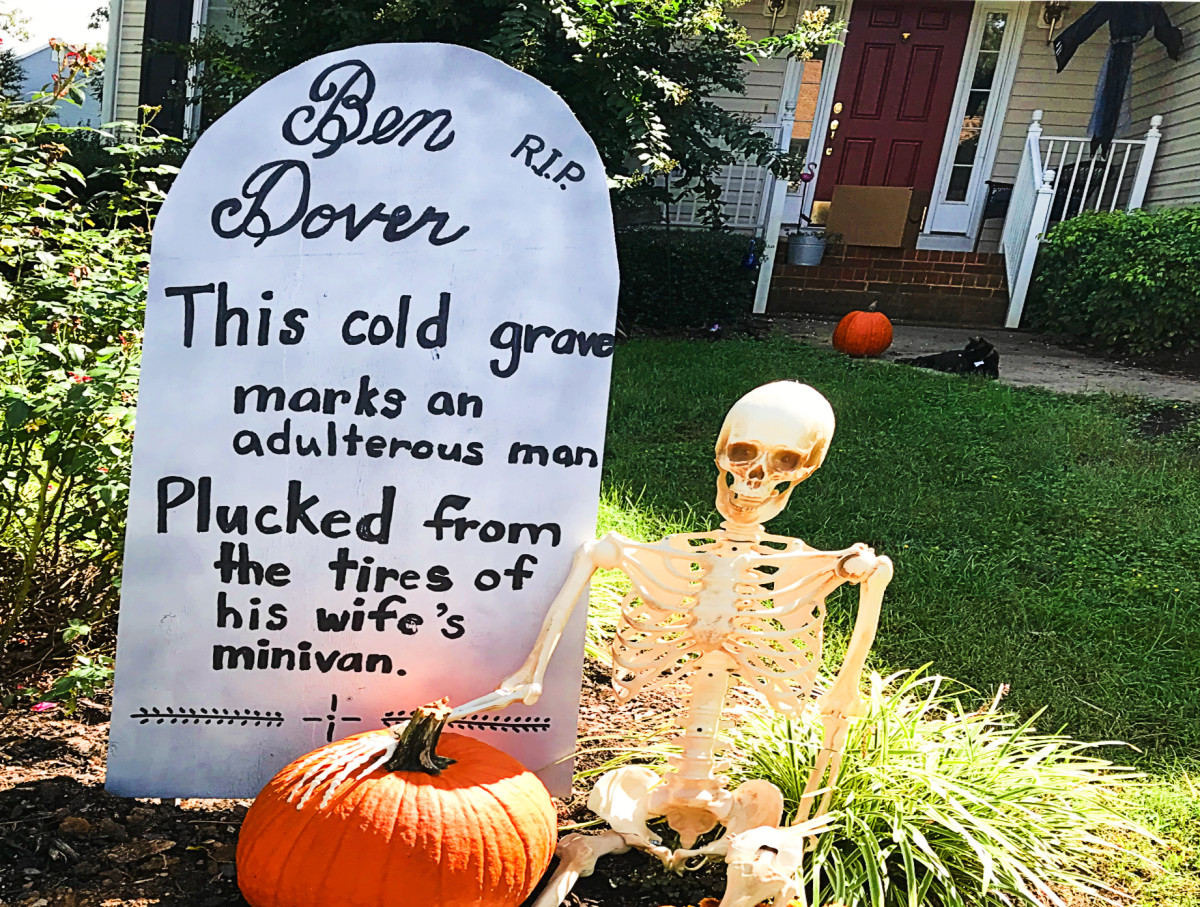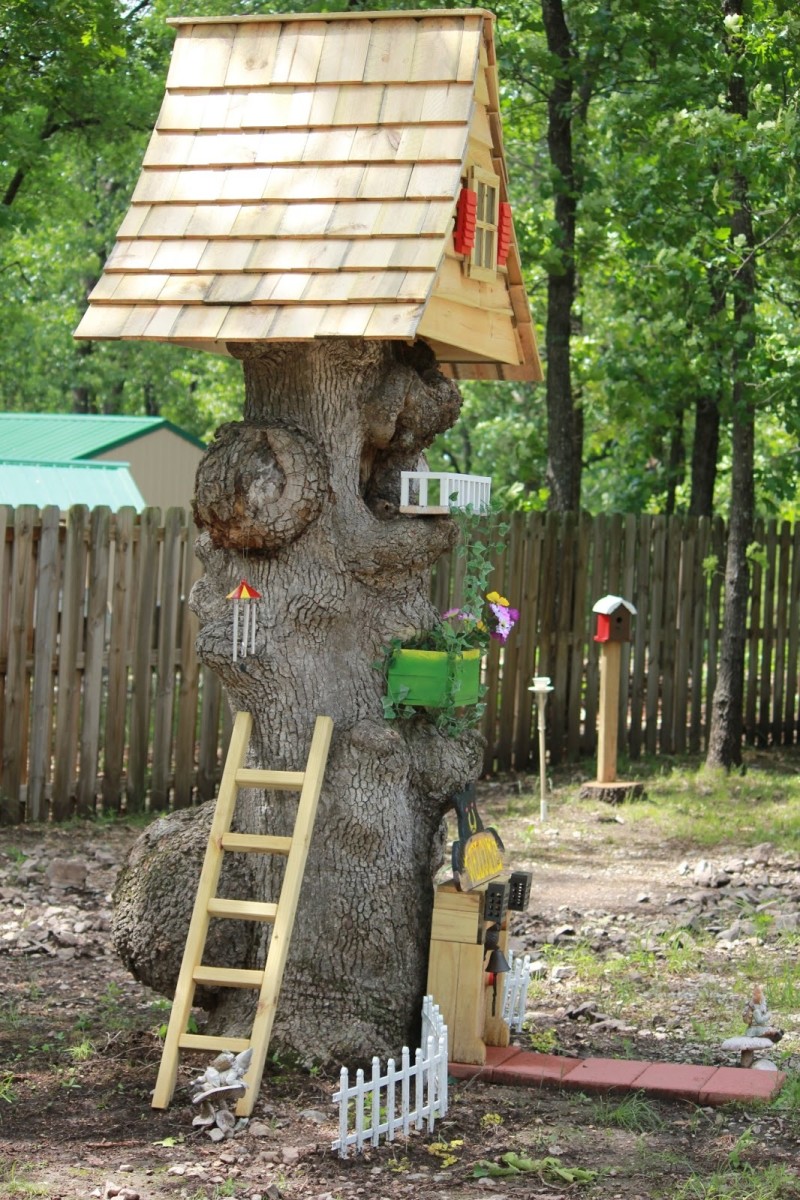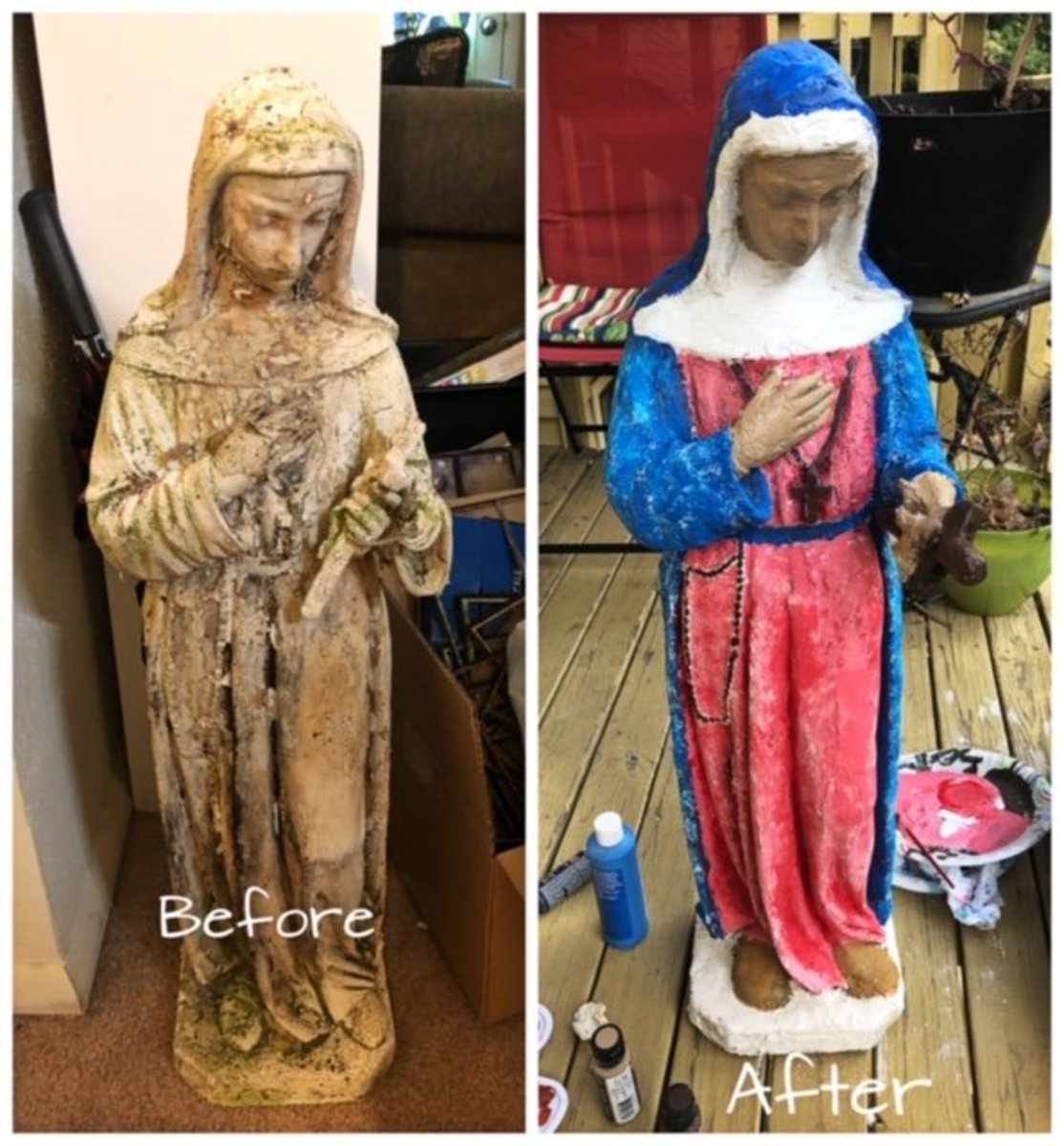The Art Of Death
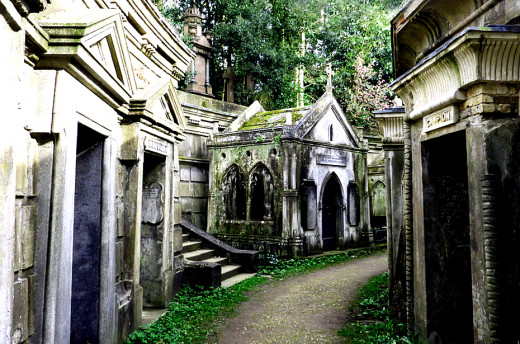
The aim of Art
Aristotle observed that "the aim of art is to represent not the outward appearance of things, but their inward significance." It is doubtful that when he gave forth this profound nugget of philosophy he specifically had in mind funeral customs, yet in the years that followed between the first pagan stone and earthen burial mounds and the laser-etched, computer-designed monuments to individualism of today, no other ritual of life has been more closely tied to art and artistic symbolism than death.
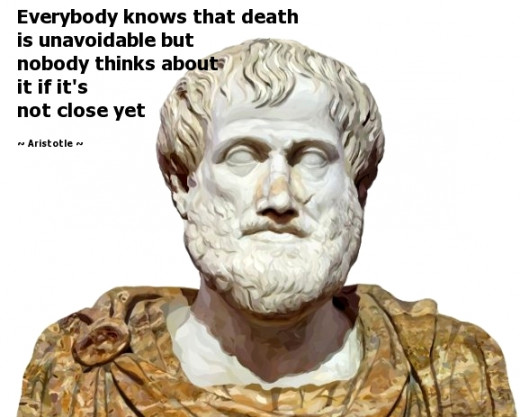
Death: An enduring statement
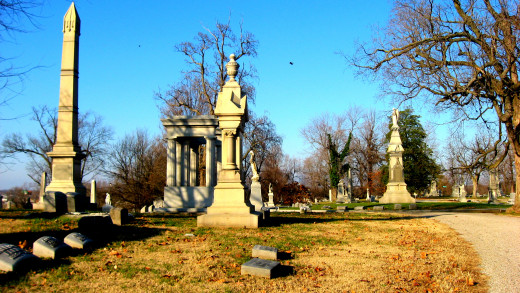
Death: An enduring statement
Dying is the final act of every human being and, as such, carries weighty significance for everyone who will face it. No matter the emotion, be it fear, resignation, despair or the anticipation of shedding fleshly shell in preparation for spiritual ascendancy, death cannot and should not be viewed objectively. Even so, it is a very human desire as we each make the inevitable journey into the unknown that we leave behind a memento of remembrance, a way to ensure we are not forgotten, an enduring statement that we once were. This is how the art and architecture of the cemetery arose to become what it is today.
Grand Architecture of Burial

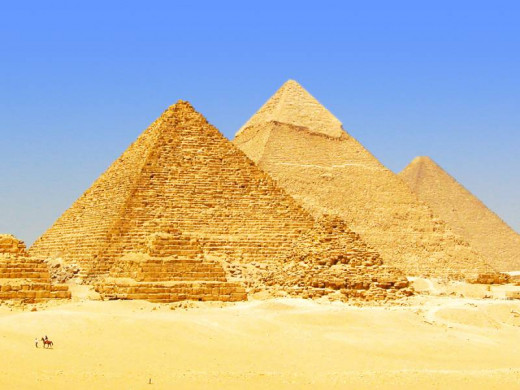
Ancient Art and Architecture of the "Cemetery"
Only a few of us may have the honor and affluence that we may have been born with or inherited, or somehow acquired, in which to be eternally enshrined within a Taj Mahal or a Great Pyramid, a royal vault within the consecrated walls of Westminster Abbey, or a papal tomb in the Vatican sculpted by Michelangelo. The lack of means and, frequently, space, coupled with low literacy rates necessitated the evolution of stylized symbols which effectively paid homage to the departed while also allowing the living to gain an insight upon the decedent's nature, faith, trade, fraternal associations or philosophy. Art is an universal language, needing no translation.
Graveyard art, symbols and meanings
Cultural, ethnic and religious influences serve to have the greatest impact upon graveyard art, but the meaning of most symbols have remained relatively constant down through history.
- Crosses, whether Latin, Greek or Celtic, are most strongly associated with Christianity,
- The six-pointed Star of David is similarly connected with Judaism.
- The death's head equates finality,
- A lamb, often found on a child's plot, indicates purity and innocence.
- A square and compass likely means a Masonic affiliation.
- Drapery means mourning and a
- A curtain symbolizes the passage from a worldly existence into the veiled spiritual realm.
Upon closer observation and with a basic knowledge in the fundamentals of graveyard art, the cemetery visitor can discover the true implications of the usage of the symbols, and the art.
Winged ox
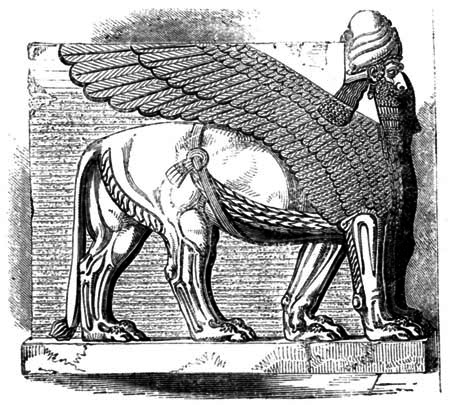
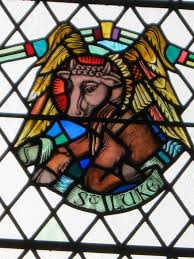
Winged Ox
The winged ox is representative of the evangelist St. Luke and signifies sacrifice and service.
Denuded tree: Woodsmen of the World Tombstone
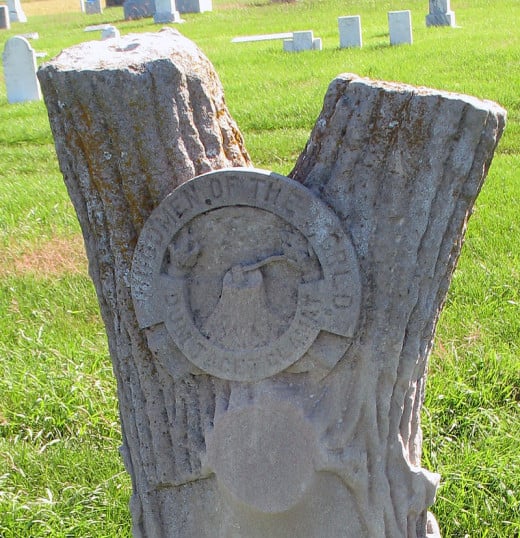
Denuded tree
The denuded tree, symbolizing equality, is a common memorial for the fraternal Woodmen of the World whose pledge to members even today is "no Woodmen shall rest in an unmarked grave."
Denuded Devotion
Secrets of the Woodsmen of the World
Unwieldy stone
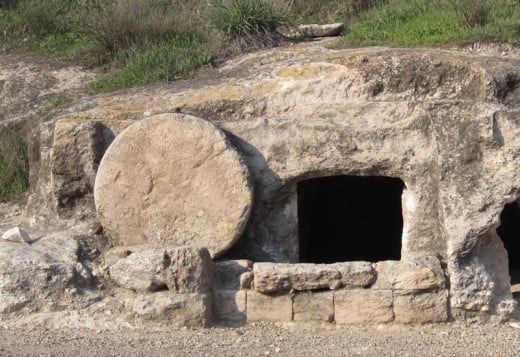
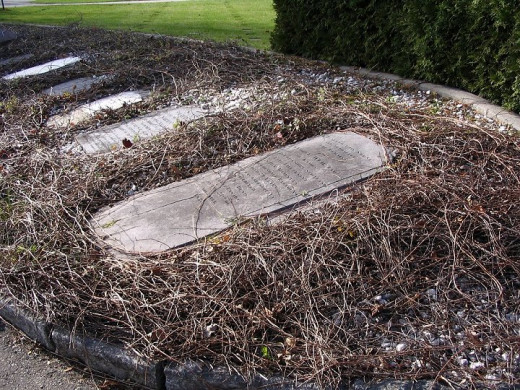
Unwieldy stone: "Who were you? What did you do? Why were you here?
The unwieldy stone, far from being a blemish upon a less than favorable piece of real estate, refers to the Resurrection of Christ upon the third day as related in Luke 24:2...'And they found the stone rolled away from the sepulchre.' It serves further as a reminder of the Lord's promise that His faithful followers shall also transcend the grave and attain salvation in the Kingdom of Heaven.
Headstones have always been an important part of our history, for many reasons. These tributes serve as more than just symbols to mark where a person has been lain to rest. For some of us, they are our final mark on the world, as well as a link for our descendants to learn more about their family history. It is true that a lot of the history we have gathered comes from tributes left of the days before. Even if the person the marker was for was not famous, their last mark gives a world of information about the era they lived in, how they lived, and one can even gather a sense of the persons personality, simply based off of how the marker was decorated.
Square and Compass
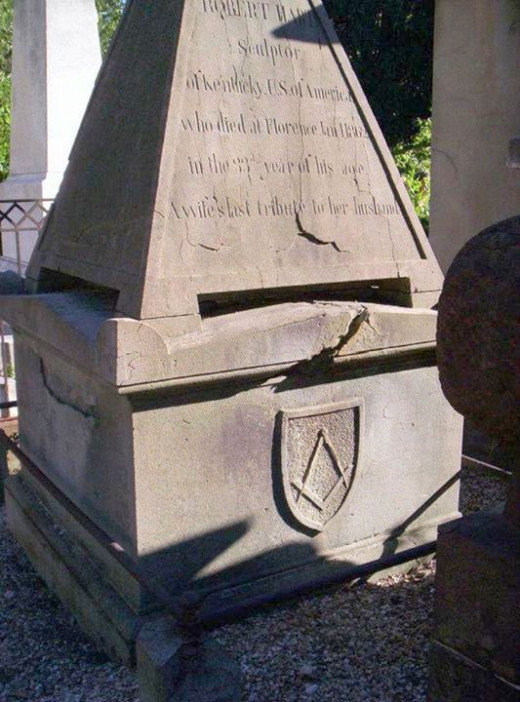
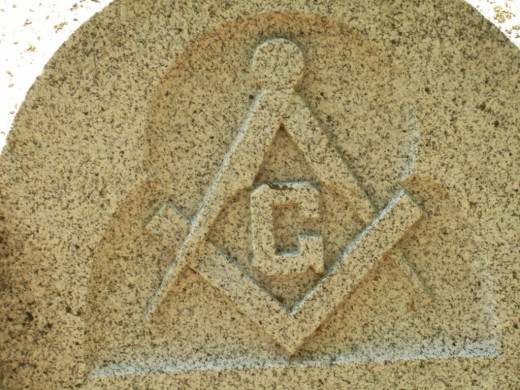
Square and Compass
The Masons are essentially a fraternal organization that is rooted in the belief of a Supreme Being, which is inclusive to gods of many faiths. The connection of this faith to everyday life is seen in one of the Mason's most recognizable symbols, the Square and Compass.
At the top of this Mason's tombstone, the Square and Compass can be seen plainly. The Square and Compass can be interpreted in many ways, and there is no one way the Mason's interpret it. From what I understand, the square serves to remind Mason's to keep their actions in check and "square" with what the Supreme Being would want from them. The compass stands to represent the belief that Mason's must maintain a balanced relationship with both mankind and the Supreme Being in order to be a proper Mason. The "G" in the middle of the symbol reminds the Mason that a relationship with God (or Great Architect of the Universe) is central to making accurate judgments on how to carry oneself. Without this reasonable, even approach, then the Mason would be out of control and going against their fellow man and the higher power, I believe. It would also seem to me that these tools of measurement are a reference to the stone builder origins of the organization.
Death's Head
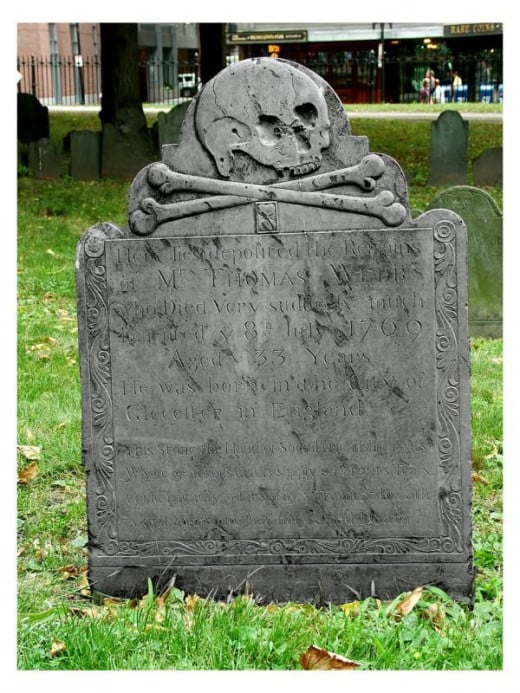
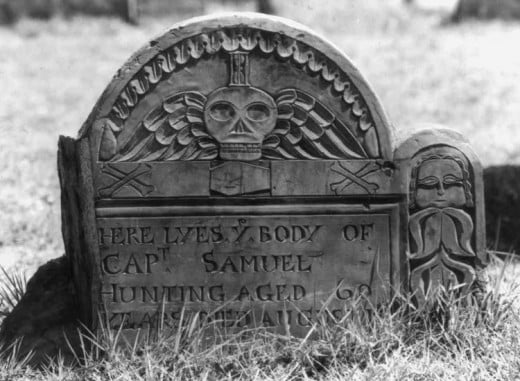
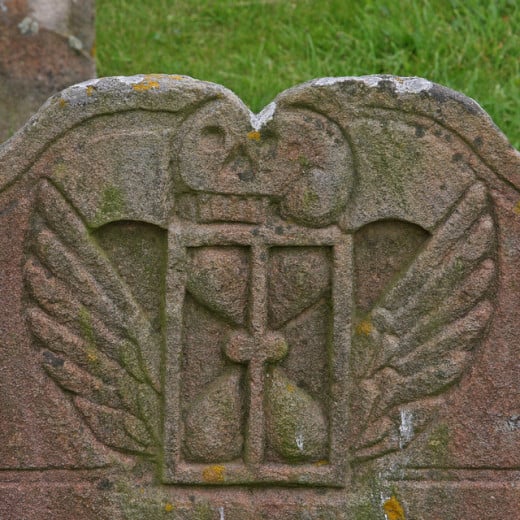
Death's head
A death's head, often with wings and/or crossed bones, was a stylized skull. Some have speculated that winged skulls were intended to symbolize a combination of physical death and spiritual regeneration.
The death's head, a non-religious symbol was the first imagery employed in gravestone carving. Other decorative motifs accompanying the death's head were the hourglass (and even a winged hourglass symbolizing the concept "time flies"), coffins, elaborately carved side panels with florets, finials, foliage, fruit, and imp-and-dagon figures. Seventeenth and eighteenth-century stones generally had solemn epitaphs which prompted passers-by to contemplate mortality and the fleeting nature of life on earth.
Lamb tombstone
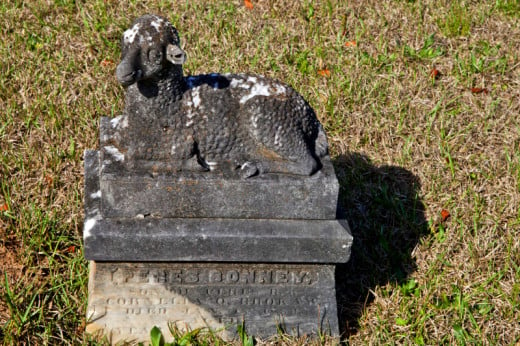
Lamb
Lambs are often seen on children's gravestones. A lamb represents innocence. Christians go a little further and associate it with the Lamb of God, meaning Jesus.
Other examples of children's tombstones
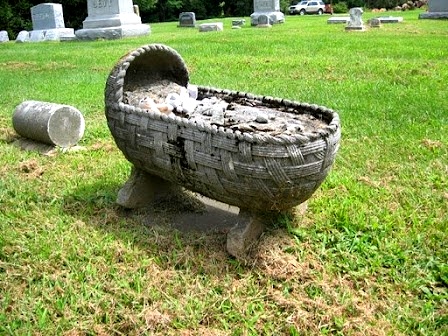
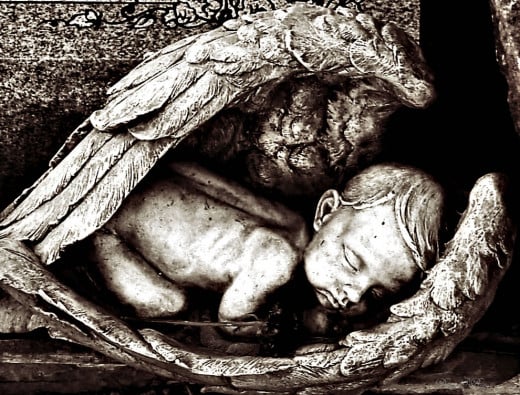
Drapery and Curtain on tombstones
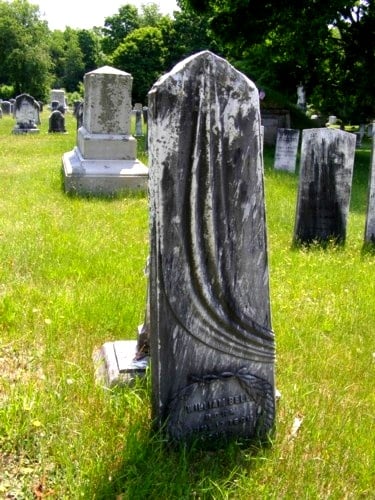
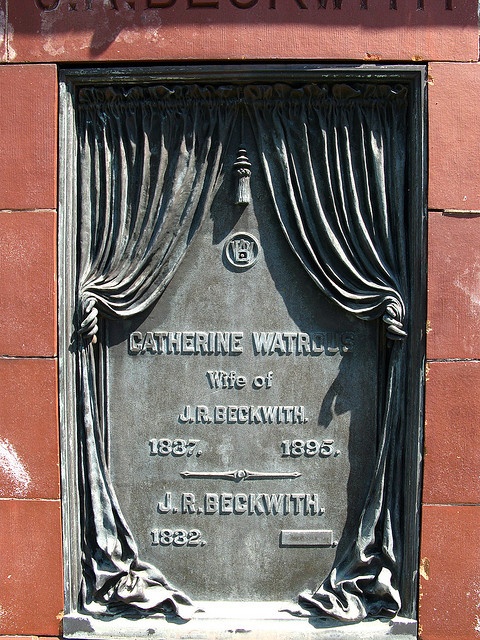
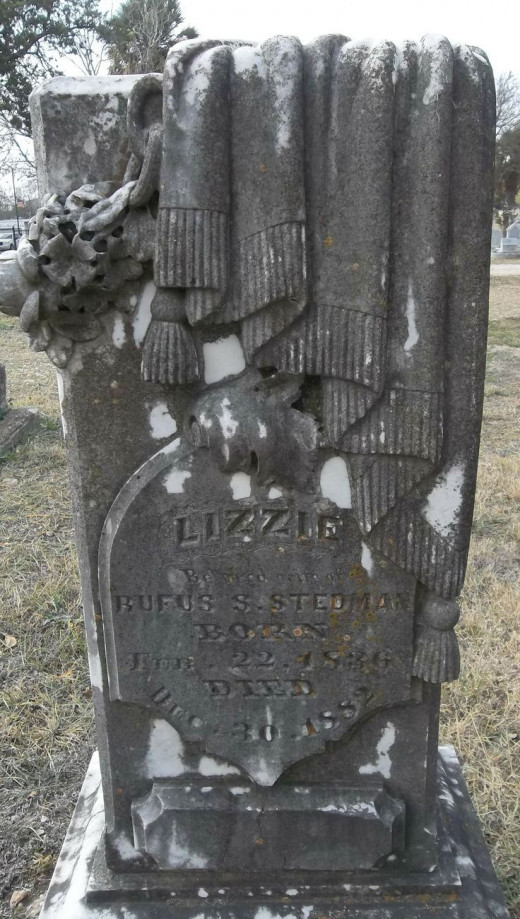

Drapery and curtains
In the days when the body lay in state in the parlor, it was the custom to cover everything in black. Draperies, with their fancy frills and tassels, are more elaborate than a simple shroud. They allow the expression of mourning to linger long after the body has been taken out the front door and the accoutrements have been stowed for the next death in the family. Curtains can also set the stage. Parted, they reveal a telling excerpt. What is important in such displays is the main actor or central object of the stone.
Crosses and Six-pointed Stars
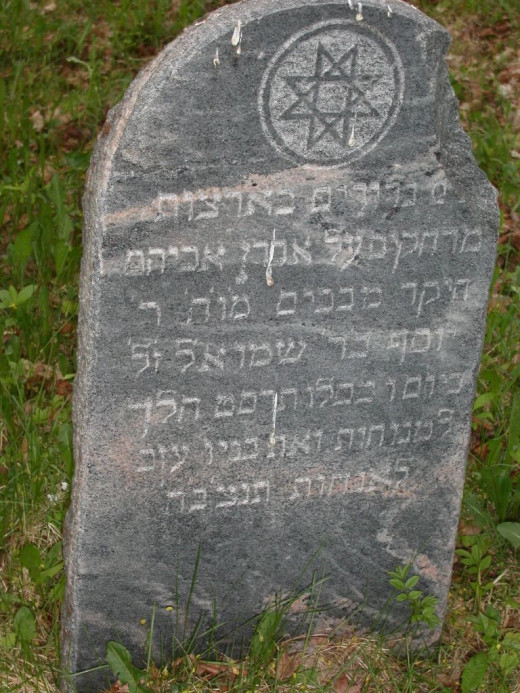
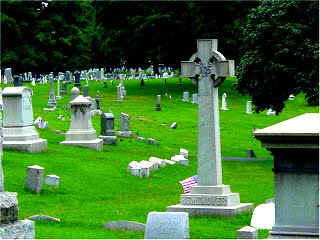
Crosses and the Six Pointed Star
One of the things that always intrigues me as a Cemetery Sleuth is the different types of crosses in the graveyard. Rather than go through a different discussion on all the different types of crosses that can be seen this article did a wonderful job.
The Six-pointed star is typically associated with Judaism.
Angels in the Graveyard
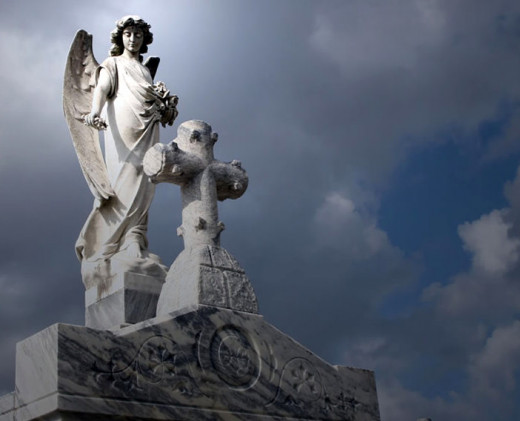
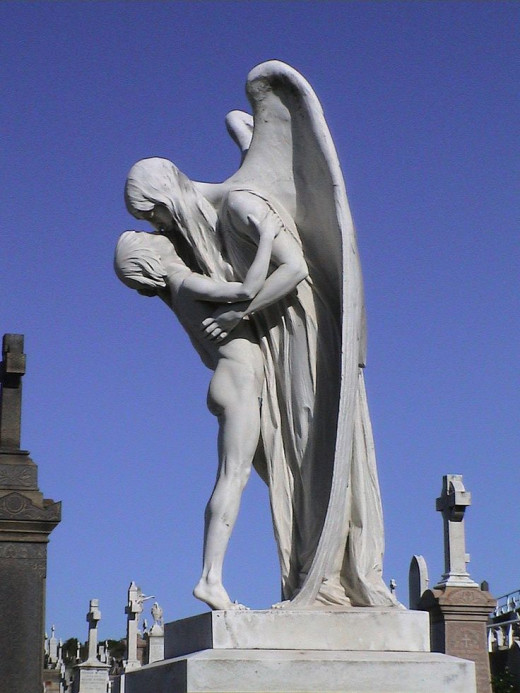
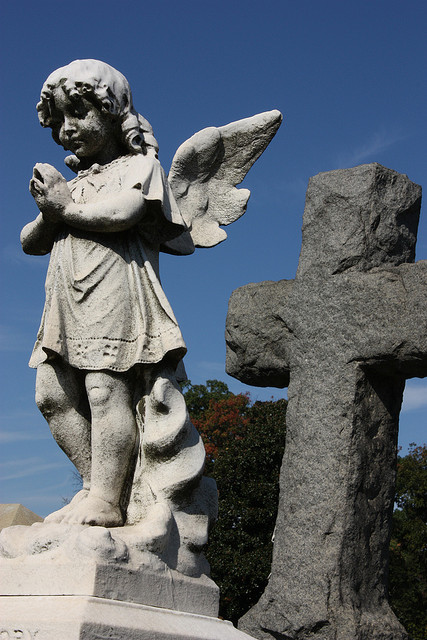
Angels
Angels are undoubtedly the second most popular form seen among the fields of eternal slumber. A potent symbol, recognized almost universally as divine messengers within every culture, there are three orders of angels, subdivided into nine "choirs". The hierarchies, from most powerful (closest to God) to least, are the Counsellors which include the Seraphim, Cherubim and Thrones; the Governors, consisting of the Dominions, Powers and Virtues, and the Messengers which are populated by the Principalities, Archangels and Angels.
These winged images are depicted in a multiplicity of guises, and being the intermediaries between Heaven and humans, adorn not just cemeteries, but grand cathedrals, temples and imposing halls of justice. Gabriel ready to sound the Horn of Judgment, Michael with flaming sword hefted against the enemies of God and man, jubilant seraphim and dimpled cherubs are all familiar. Most common, however, is the feminine angel, whether saddened or serene, gowned in flowing heavenly robes.
Seven Virtues

The Seven Virtues
Frequently the seven Virtues are depicted in cemetery sculpture, and often the subtle nuances between them are misconstrued by the undiscerning eye. Despite being of the middle order of angels, they are seldom seen with wings, but there are other clues that help determine their identities. If the lady is seen with a cross, candle or lamp, then she is likely Faith. Hope is often accompanied by an anchor or a boat, symbolic of the voyage to the next realm. Artwork usually shows Charity nursing a child, but chaste Victorian morals damped this suggestive pose to the tamer and less lewd act of her beginning to bare a breast. Even this proved to be more provocative than many of the straitlaced could handle, so a basket of food or a heap of clothing was substituted instead.
Faith, Hope and Charity are considered the theological Virtues, while the four lesser or cardinal Virtues are Temperance, Fortitude, Justice and Prudence. Temperance, seen with a water pitcher or other type of ewer, usually graces the tomb of a teetotaler or Prohibitionist, and may have with her either a bit and bridle or a sheathed sword indicating control and restraint. Fortitude is often seen as a confident warrior with club, shield and helmet. Justice is more frequently seen on courthouses than in cemeteries, but her unmistakable symbol is the scales. Prudence is rarely found since her two heads and serpent or dragon companions may send the wrong message about the departed, yet when she is located, a less alarming rendering of her is with a mirror and a discreet snake, both of which allude to the quest for knowledge.
Cemetery Sleuth! Really!?!?!?!
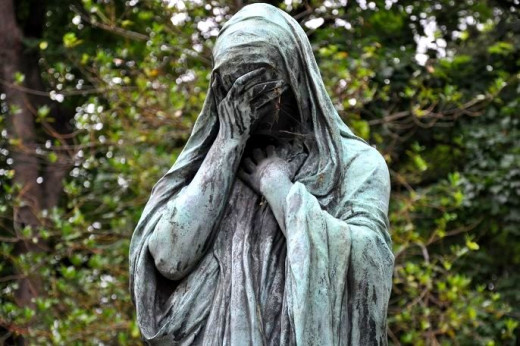
Cemetery Sleuthing
For many, cemetery sleuthing is a hobby, albeit an unusual one. For others it is more. It is a passion, neither macabre nor ghoulish, but beautiful and spiritually uplifting. Venturing into the grounds set aside for eternal rest can also be likened to the fitting together of pieces of a puzzle. Decoding the symbolism can provide an educational insight into not only local history and personalities, but into the evolutionary social, economic, and ethnic values of the neighborhood as well. Though we have explored only a few types of memorials erected to honor the departed, there remains a diverse wealth of others awaiting our discovery. The graveyard is quite literally stories in stone.
So the next time you think on viewing some artwork, rather than a trip to the museum, visit a local cemetery. You'll most likely find it just as pleasant, illuminating and peaceful as any docent led tours... and nowhere near as crowded, unless you consider those already there ahead of you.
Not an exhaustive list of graveyard art....
Obviously this is not a complete list of all the graveyard art or expressions that you would find on your sleuthing. However, this would turn into a short novel should I attempt to write about it all.
I do, however, trust that you found this information enlightening, and helpful on your next adventure through the cemetery.
A few more examples of graveyard art
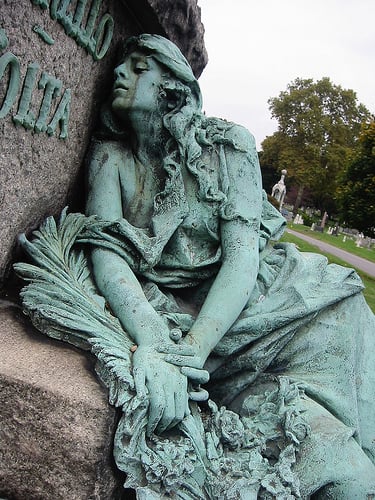
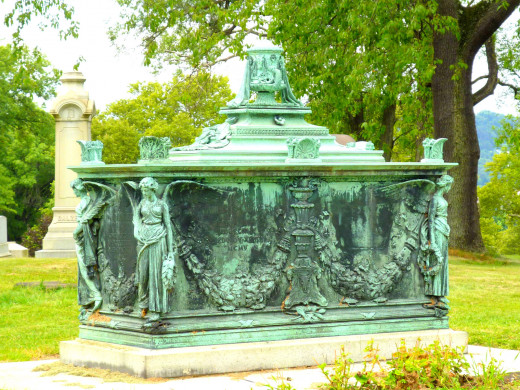
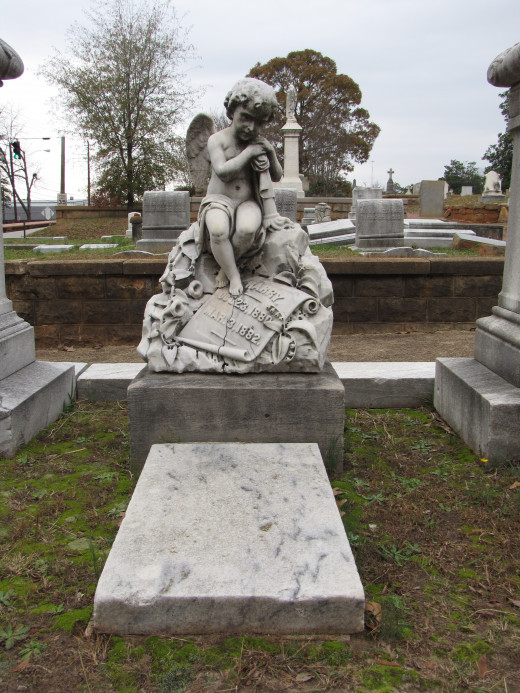
Death: A painful truth
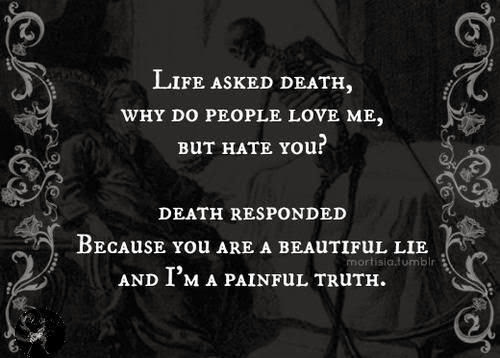
Ghost stories!
An article about Graveyard Art would not be complete without a couple of ghost stories so, here goes.......ENJOY!
John Rowan Tombstone Marker
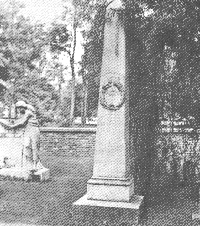
Tombstone stories: John Rowan
John Rowan's restless gravestone
The Gravestone of John Rowan in Bardstown, Kentucky.
John Rowan was a state judge in Kentucky, served seven terms in the legislature and was elected to the United States Senate. He was also Kentucky's Secretary of State and the chief justice for the court of appeals. His cousin, Stephen Foster, is probably the best remembered songwriter of the 1800's and Rowan's former mansion, Federal Hill, is now a popular tourist attraction. It was at Federal Hill that foster wrote “My Old Kentucky Home” and the house was given this nickname many years ago.
Tragedy plagued Rowan throughout his life. When he was a boy, he was so sickly that his family never expected him to live very long. Hoping that the robust country might invigorate the puny child, Rowan’s father, William Rowan, moved the family west to Kentucky. Here, enrolled in Dr. James Priestly’s school, John began to thrive and not only improved physically but intellectually as well. He became a brilliant scholar and studied law in Lexington and was a well-known lawyer by 1795. A few years earlier, Rowan met Ann Lytle and the two married. The land on which Federal Hill was constructed was deeded to Rowan by his father-in-law in 1794. Throughout the early 1800’s, the Rowans hosted a number of dignitaries, including Henry Clay, James K. Polk, James Monroe and others.
When Rowan died in July of 1843, he expressly stated that he wished to have no monument or stone placed on his grave site. He felt that since his parents had been buried without grave markers, he would be disrespecting their memories if he were given an honor they had not received. He felt that his home at Federal Hill stood as more than enough monument to his memory. His family and friends ignored this request however, believing that such a great and prominent man deserved a suitable marker to grace his final resting place. He was buried in Bardstown Cemetery, then later moved to Federal Hill Cemetery (near his home) and a tall, obelisk-shaped stone was placed at the site.
No one seems to know, but it’s just possible that John Rowan meant exactly what he stated in his will... that he forbid a monumental stone of any kind to be placed on his grave!
Josie Arlington's Fiery Tomb
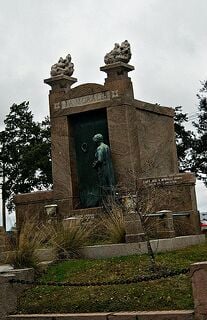
Tomb stories: Josie Arlington
The notorious madam purchased a plot on a small hill and had erected a red marble tomb, topped by two blazing pillars. On the steps was a bronze statue showing Josie ascending the staircase with a bouquet of roses in the crook of her arm. The tomb, an amazing piece of funerary art designed by an eminent architect named Albert Weiblen, cost a small fortune. But Josie considered it well worth the money for the scandal it created.
No sooner had work been finished, in 1911, than a strange story began making the rounds of the city. Some curiosity-seekers had gone out to see the grave one evening and were greeted with a sight that sent them running. The tomb seemed to burst into flames before their very eyes! The smooth red marble shimmered with fire, and the tendrils of flame appeared to snake over the surface like shiny phantoms. Word quickly spread, and people came in droves to witness the bizzare sight. The cemetery was overrun with people every evening, which shocked the cemetery caretakers and the families of those buried on the grounds. Scandal followed Josie even to the place she had chosen for her final resting.
Josie passed away in 1914 and was intered in the "flaming tomb," as it was often called. Soon an alarming number of siteseers began to report another weird event. Many swore they had actually seen the statue on the front steps move. Even two of the cemetery gravediggers, a Mr. Todkins and a Mr. Anthony, swore they had witnessed the statue leaving her post and moving around the tombs. They claimed to follow her one night, only to see her disappear.
Jonathan Buck's stained tombstone
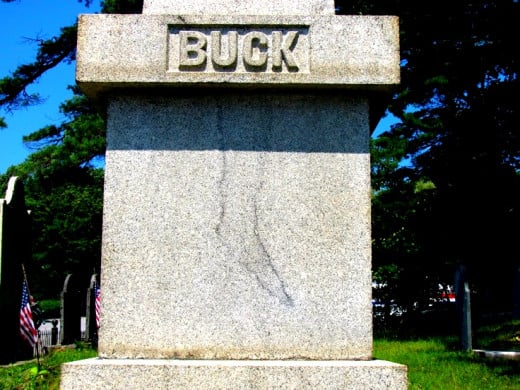
Tomb stories: Jonathan Buck
The grave monument of Jonathan Buck in Bucksport, Maine is said to be marked with the image of a witch's leg. Legend has it that Buck was cursed by a witch who promised to return and dance on his grave.
As the story goes:The grave of Jonathan Buck in Bucksport, Maine has a footprint stain in the tombstone. The tombstone has been replaced many times but the foot always reappears a short time later. Jonathan Buck ordered the death of his mistress, claiming she was a witch. She promised to return and dance on his grave. It is believed to be her foot (and leg) that continues to appear on the tombstone.
Curse on Jonathan Buck's Tombstone
Marie LaVeau
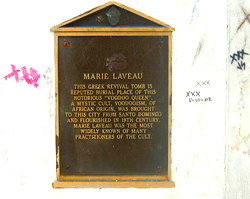
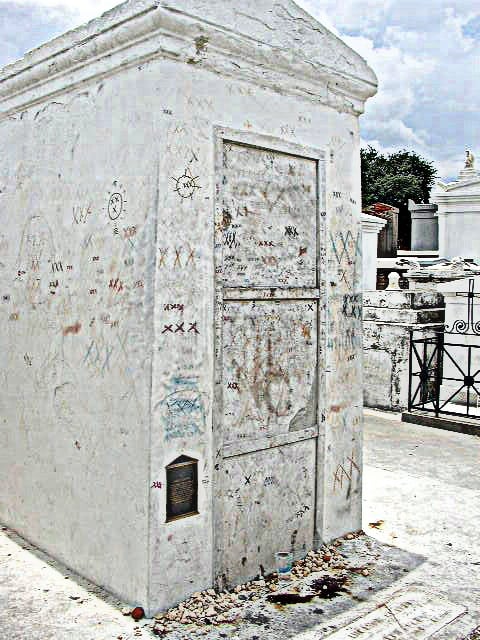
Tomb stories: Marie Laveau
Perhaps one of the most famous residents of St. Louis Cemetery I is Marie Laveau, the Voodoo Queen of New Orleans. Her tomb, the most frequently visited, looks like most others in the cluttered cemetery, until you notice the markings and crosses that have been drawn on the stone. Apart from these marks you will also see coins, pieces of herb, beans, bones, bags, flowers, tokens, and all manner of things left behind in an offering for the blessings of the queen. Legend has it that Marie's ghost sometimes walks here, and one man claims to have been slapped by her spirit one day, after making a disparaging remark at her tomb.
Marie LaVeau
Marie Laveau, Legend and Truth
Black Angel
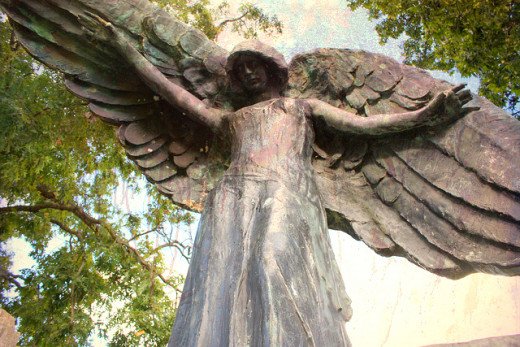
Tomb stories: Feldevert family in Iowa City and the Black Angel
In Oakland Cemetery, on the north side of Iowa City, Iowa, stands a foreboding, mysterious statue. Locals tell tales of the mysterious powers and curses the memorial contains. Legions flock to the site to tempt their fates by testing the various legends surrounding it. She is the mysterious Black Angel.
The Black Angel is an eight-foot tall bronze statue that stands over the graves of three members of the Feldevert family. The stories associated with the statue tell of its mysterious change in color. Over time the mournful winged angel has transform from her original brilliant bronze tint to a more dark and foreboding black hue. All attempts to restore the statue to its original gleaming incarnation have failed, and the Angel continues to get darker and more ominous looking with each passing year.
There are a few legends that attempt to explain this drastic change. One story says that the matriarch of the family beneath the angel, Teresa Feldevert, was an evil witch in life. Her evil was so great that even in death it managed to taint the monument directly above her. Another legend states that when Teresa’s husband buried her, he swore never to dishonor her memory by sleeping with another woman. As time went on and he managed to move past his grief, he found another sweetheart and slept with her. This breaking of his graveside promise resulted in the Black Angel’s discoloration.
Tomb stories: Julia Petta, the Italian Bride
(Left) This photo shows the exact likeness of Julia Petta (also known as the "Italian Bride"). After she died during childbirth in 1921, her mother began to have strange dreams in which Julia was still alive. She began to seek an exhumation order for her daughter's grave. Finally, after six years, the grave was opened and Julia's body was found to be perfectly preserved! She looked exactly as she had when she died, even though her casket had deteriorated badly. Her ghost has been seen near her gravestone ever since.
Julia Petta, Italian Bride
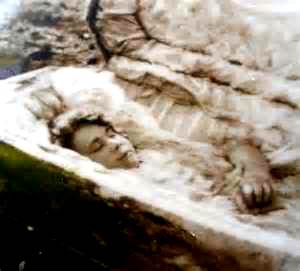
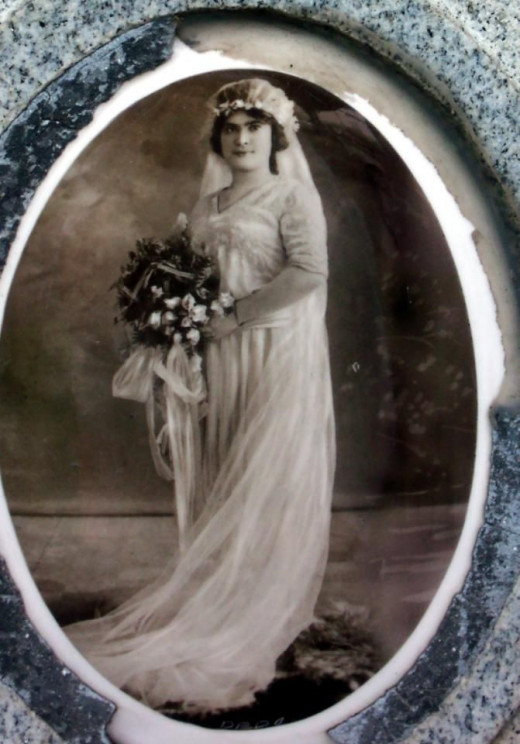
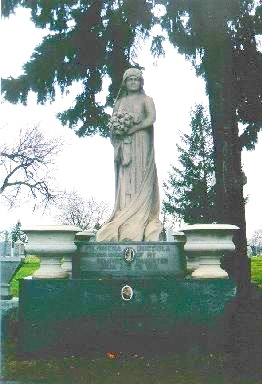
The Italian Bride
Caught on film
Have you ever done cemetery sleuthing?
Have you ever walked trough a graveyard to just look at graves?
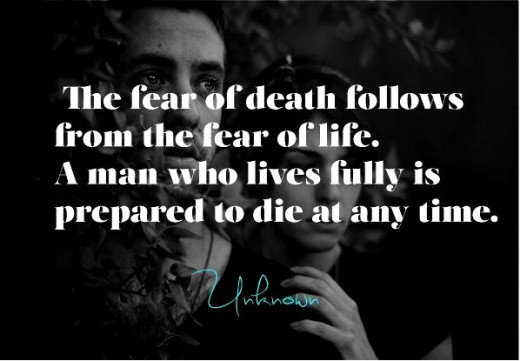
Happy sleuthing!
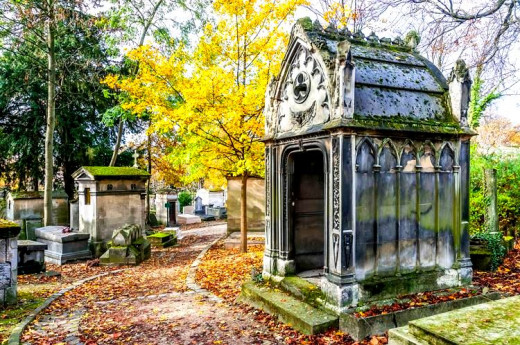
Great book about the at and sculpture of the Cemetery.
© 2015 Gina Welds



